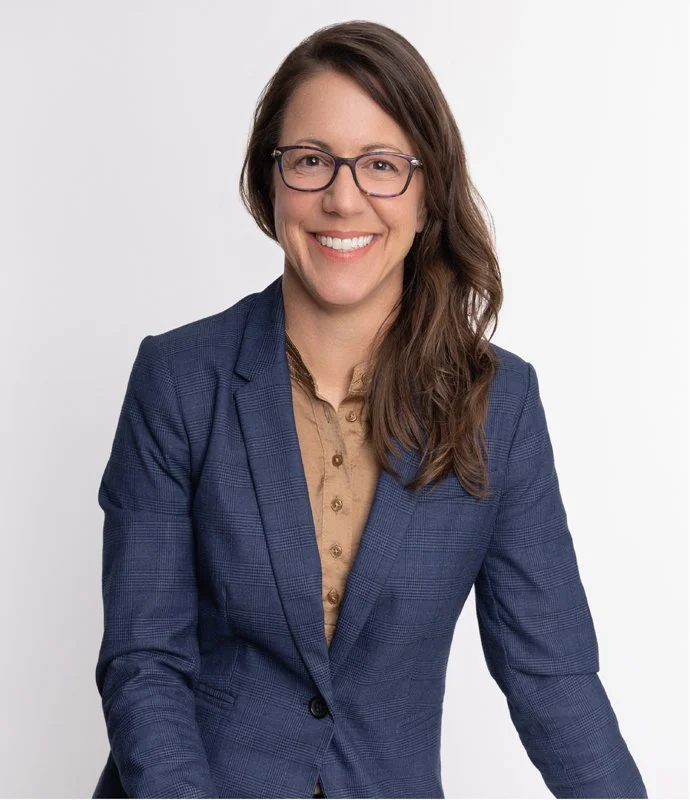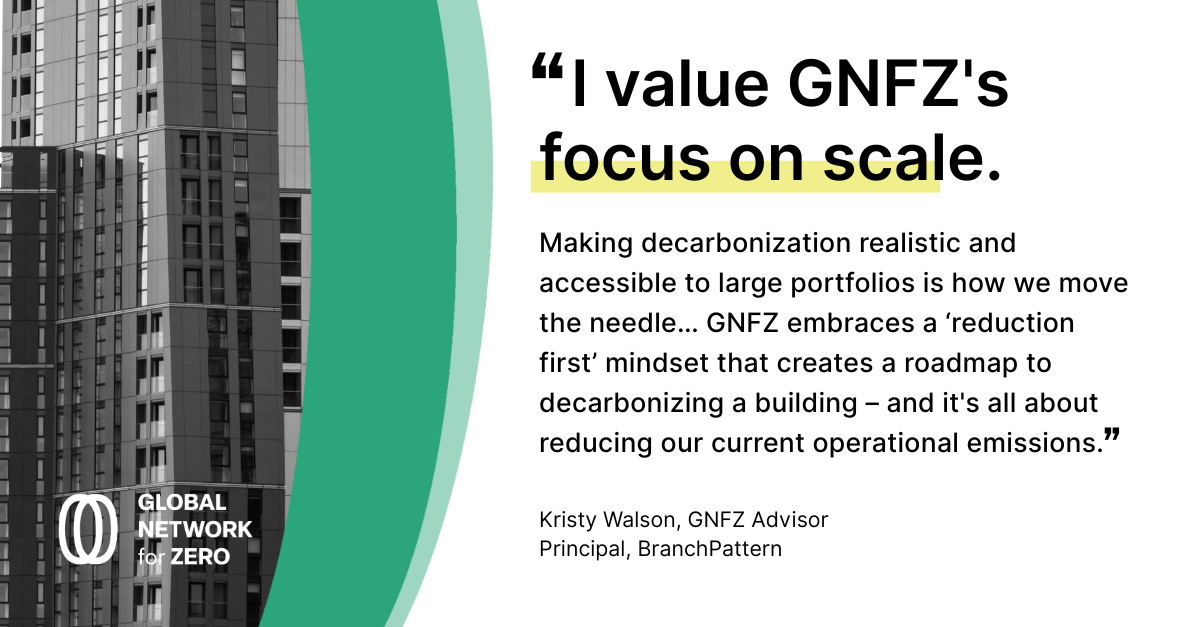Network Insights: Kristy Walson on Why Collaboration is Critical to Move Decarbonization Forward
At GNFZ, we are grateful to partner with champions of decarbonization and sustainability who understand the barriers that organizations and projects face in achieving their full potential — and more importantly, know how to effectively remove and overcome them.
Which is why we’re excited to share insights from an interview with Kristy Walson, Principal and Building Science Practice Lead at BranchPattern and GNFZ Advisor, who works to empower people and organizations to accelerate the realization of a zero emissions world.
Monthly network insights are shared first with our email list. Subscribe today for exclusive access.
Principal and Building Science Practice Lead at BranchPattern, Kristy Walson
GNFZ: What role do you play in your company and what does your company do?
Kristy Walson: BranchPattern is a sustainability consultancy, first and foremost. We have a full-service Building Science practice that encompasses a holistic line of services supporting sustainability and decarbonization within the built environment, while always focusing on the human experience. Because, after all, buildings are made for people.
BranchPattern also provides MEP, technology, and acoustics design services. We're unique in that we are a sustainability firm first, with a strong Engineering practice to support our decarbonization work.
I have the privilege of leading our Analytics department, which includes our energy modeling and embodied carbon modeling teams. As a holistic thinker, it's important to me to have an understanding of the big picture, so having the opportunity to influence "all the carbons" is important to me. I also lead our emerging Existing Building services, so all the things I love, decarbonization and existing buildings, are all within my grasp.
Why is achieving net zero in the building sector important to you personally and your company?
We know that the building sector makes up 40% of global emissions. And this only includes the buildings that exist today. Decarbonizing existing buildings is critical to mitigating climate change globally. It's as simple as that.
Personally, I see enormous potential in decarbonizing existing buildings because the embodied carbon has already been spent, and these older buildings tend to be extremely inefficient with lots of opportunity for improvement. These inefficiencies are largely driven by deferred maintenance and degradation of the envelope over time. However, with new technology meant to support energy efficiency, we can reinvigorate these buildings to be high performing and low carbon emitters.
What is your definition of leadership in the sector(s) that your organization operates in?
To me, leadership in the decarbonization sector looks like knowledge-sharing and freely sharing tools and data. You'll see me and many of my BranchPattern colleagues speaking at conferences and webinars, collaborating on articles, and leading decarbonization efforts in our communities. We strongly believe that sharing tools and resources with the public — many of whom may be considered competitors — is a critical way to move decarbonization forward quickly. We're all running in the same race, it's important that we're aligned on how we get to the finish line.
In my 2+ years here, we've shared our Embodied Carbon Benchmark Study for industrial buildings, our Decarb Playbook, and the CLEAR Tool for operational carbon. These are all resources developed in-house with the intent to share with the public. It's critical that we and other industry leaders share out resources so that we can move quickly on decarbonizing the built environment.
How do you think GNFZ and you or your company can collaborate to bring value to a larger ecosystem of businesses to achieve net zero?
GNFZ and BranchPattern are focused on decarbonizing large portfolios of existing buildings. The synergy is clear. Nobody, not one person, one firm, or even one global organization can mitigate climate change alone. It takes a global team to pull this off. Partnerships, like BranchPattern and GNFZ, are critical to moving fast towards a global solution. It's inevitable that in our lifetime we won't witness the impact that today's global decarbonization efforts will make. This work requires stubbornly optimistic partnerships and speed.
Because, at the end of the day, what if we get it right?
What do you value most about GNFZ’s net zero certification and platform, and how does it benefit your clients?
I value GNFZ's focus on SCALE. Making decarbonization realistic and accessible to large portfolios is how we move the needle. I've seen Mahesh speak dozens of times over the years and I appreciate his ability to simplify the business case for decarbonization. We need easily understandable metrics in the hands of decision-makers. GNFZ embraces a "reduction first" mindset that creates a roadmap to decarbonizing a building and it's all about reducing our current operational emissions.
Is there anything else you would like to add?
Let's switch the business-as-usual mindset from short-term to long-term when planning for retrofits at existing buildings. If we're lucky, a building's life is 60+ years. Making investment decisions based on a 5-year return-on-investment for a 60-year asset doesn't take future generations into account. We need to infuse long-term thinking into decision making and leverage the fact that a high-performing building increases asset value and decreases operating costs. Making financial decisions that consider future generations is good business.



